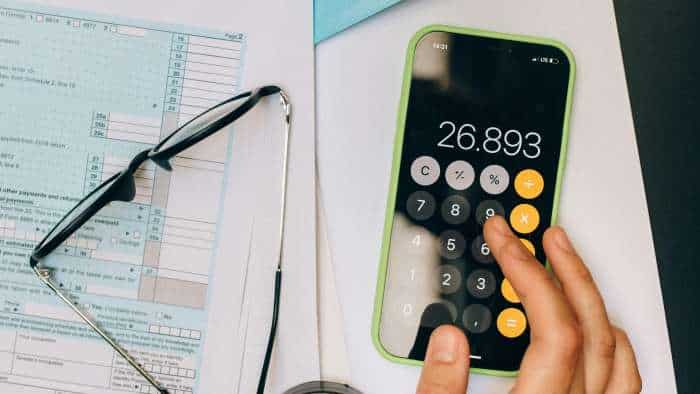GSTR-9 Filing: Here is why you may receive demand notice from Income-Tax dept
The financial year 2017-18 will be the first tax period for which this return is to be filed, and several taxpayers are facing various issues with the reporting and reconciliation of data in the GSTR-9 return.

GSTR-9 is the annual return to be filed by GST registered taxpayers. The financial year 2017-18 will be the first tax period for which this return is to be filed, and several taxpayers are facing various issues with the reporting and reconciliation of data in the GSTR-9 return.
One such area is the table 8A i.e. Input Tax Credit as per GSTR-2A. This table contains data which has been auto-populated from the GSTR-2A return. In fact, GSTR-2A is also an auto-populated return for purchases made by the taxpayer, sourced from the data uploaded by corresponding suppliers in their GSTR-1 returns.
The cause of concern that many taxpayers seem to have here, is that the data from the GSTR-2A is not tallying with the input tax credit that is currently being reported by them in the GSTR-9 return, and this could be one of the potential grounds to receive a demand notice from the tax department, says ClearTax.
So what could be the reasons for mismatches in the GSTR-2A data? Explains Archit Gupta, Founder and CEO - ClearTax:
One such mismatch stems from the downloading of GSTR-2A at a different point in time while
comparing with the auto-filled table 8A in GSTR-9. Any amendments made to the invoice details at a later date by the corresponding suppliers can result in these differences. Table 8A of GSTR-9 consists of only the latest values auto-populated based on GSTR-1s filed, taking into account all the amendments made if any. Taxpayers must run further series of reconciliations to figure out where the differences lie. It is a time-consuming task for businesses with large volumes of data.
Another instance of a mismatch is where the recipient has accounted for the input tax credit, whereas the supplier has filed his return having entered an incorrect GSTIN, hence the credit has not been reflected in the GSTR-2A of the recipient; or the supplier has not filed his returns or filed his return after 31st May 2019, in which case the credit gets locked as of 31st May 2019 and will not reflect in the GSTR-2A of the recipient either.
There are other popular reasons for mismatches as follows:
1) GSTR-2A are auto-populated based on filed/ saved/submitted Form GSTR-1 of the supplier. Whereas, Table 8A of GSTR-9 is based on the filed GSTR-1 form by the supplier.
2) ITC related to all such invoices in which place of supply lies in supplier taxpayer’s registered State, instead of State of the receiver taxpayer, have been excluded. These figures will be shown in Form GSTR-2A of the recipient. For instance, if a taxpayer of State A visits State B and stays in a hotel in State B, the tax paid by him to the hotel in State B will appear in his Form GSTR-2A, but the same will not be reflected in table 8A of Form GSTR-9.
3) Figures in Table 8A of Form GSTR-9 do not contain ITC for the period during which the recipient taxpayer was covered under composition scheme.
It is beyond the control of the recipient to ensure that the input tax credit in his GSTR-9 return tallies with the data auto-populated in GSTR-2A. However, in certain cases where it is in the hands of the recipient to reconcile and report data, where the mismatch arises due to incorrect bifurcations, then the necessary adjustments may be carried out in form GSTR-9 as follows-
Input tax credit reported by the supplier but reversed by the recipient needs to be reported in table 7 or 12 of Form GSTR-9, as the case may be. [Table 7 requires the reporting of ITC reversed in the same financial year whereas Table 12 requires an amount of ITC reversed in the next financial year but relating to the particular financial year.]
The input tax credit that is available to the recipient, but the recipient has not availed the same due to error or ineligibility needs to be reported in Table 8E (ITC available but not availed) of Form GSTR-9.
The input tax credit that is ineligible but has been availed by the recipient can be reported in table 8F(ITC available but ineligible) of Form GSTR-9.
Taxpayers should hence ensure that this data is reconciled and reported as accurately as possible while filing their GSTR-9 return.
Get Latest Business News, Stock Market Updates and Videos; Check your tax outgo through Income Tax Calculator and save money through our Personal Finance coverage. Check Business Breaking News Live on Zee Business Twitter and Facebook. Subscribe on YouTube.
RECOMMENDED STORIES

Top 7 Multi Cap Mutual Funds With Highest SIP Return in 1 Year: Rs 27,777 monthly SIP investment in No. 1 scheme has converted into Rs 3,91,609; what about others?

Hybrid Mutual Funds: Rs 50,000 one-time investment in 3 schemes has grown to at least Rs 1.54 lakh in 5 years; see list

Power of Compounding: In how many years, investors can achieve Rs 6.5 cr corpus with monthly salaries of Rs 20,000, Rs 25,000, and Rs 30,000?
09:08 PM IST










 States not in favour of bringing ATF under GST, says finance minister
States not in favour of bringing ATF under GST, says finance minister GST collection grows 9% to Rs 1.87 lakh crore in October
GST collection grows 9% to Rs 1.87 lakh crore in October GSTN to launch invoice management system from October 1
GSTN to launch invoice management system from October 1 Government rolling out pan-India biometric authentication to prevent GST fraud
Government rolling out pan-India biometric authentication to prevent GST fraud GST collections at record Rs 2.10 lakh crore in April; here is all you need to know
GST collections at record Rs 2.10 lakh crore in April; here is all you need to know